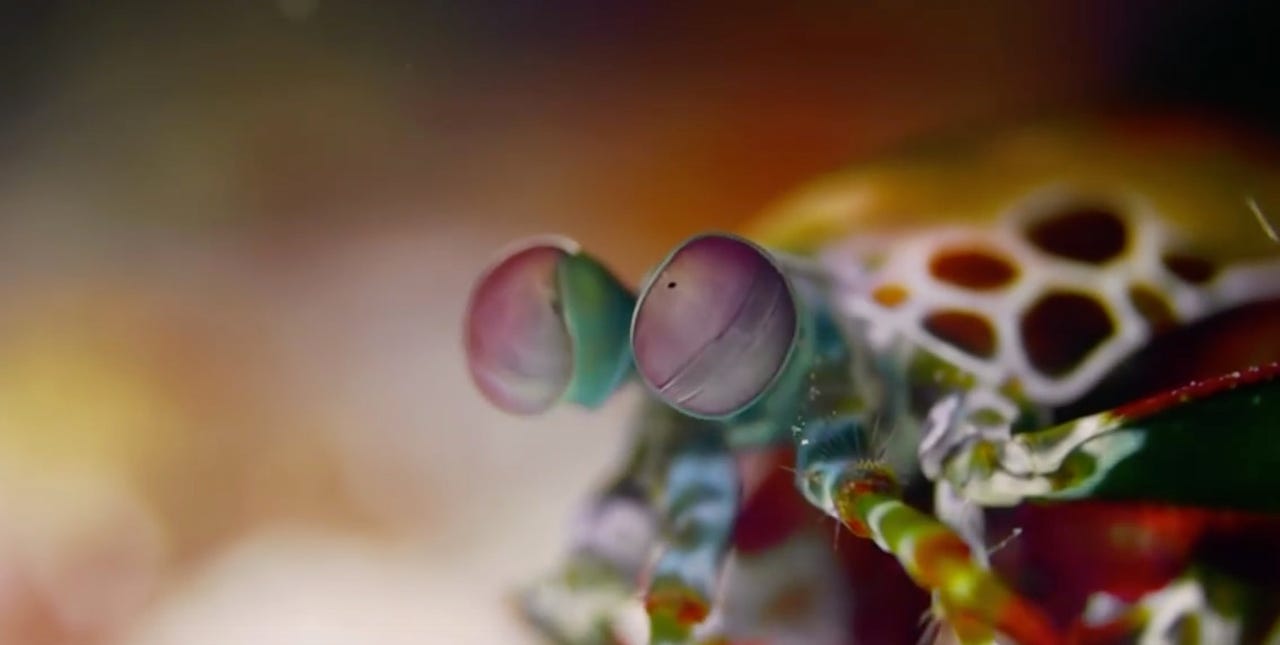Meet the shrimp that's inspiring next-generation 3D printed armor


The mantis shrimp is undeniably a beautiful creature, but its tendency to smash through aquarium glass means that you would rarely see the stomatopod outside of the open sea.
Colorful and powerful, the small shrimp uses a club to pulverize prey such as crabs with 10,000g force, similar to a .22 caliber bullet. However, the mantis shrimp's armor and cell structure is what has caught the eye of researchers developing next-generation tough materials for use in defense.
This week, researchers from the University of California, Riverside and Purdue University revealed that the mantis shrimp is the focus of a study to develop new materials.
A fist-like appendage used by the shrimp to attack prey, called the dactyl club, has an unusual "herringbone" structure within the outer layer which allows the 'fist' to withstand the force of a strike, but also is key for the shrimp to be able to smash prey with such force.
The research, due to to be published in the journal Advanced Materials, describes how the team is exploring the herringbone structure, made of crystalline calcium phosphate -- also found in human bone -- alongside fibers of chitin.
When compacted, the minerals assume the herringbone structure, making the club stiff and tough.
Herringbone structure of the outer layer (impact region) of the mantis shrimp dactyl club.
"This unique herringbone structure not only protects the club from failure but also enables the mantis shrimp to inflict incredible damage to its prey by transferring more momentum upon impact," the researchers say.
The leader of the study, Professor David Kisailus, believes the highly impact-resistant material's mechanisms include specific formations which allow buckling rather than cracking under pressure, and the outer layer of the club also has a particle-thin coating which "delocalizes stress that might induce catastrophic failure within the club."
While analyzing the mantis shrimp, the team were able to fabricate the herringbone structure using synthetic materials and a 3D printer.
The tests proved that the herringbone structure was the most effective element of the club in creating resistance and reducing stress points, and these findings have paved the way for the structure to be used in applications across the aerospace, automotive and armor industries, among others.
Kisailus said recent advances in 3D printing techniques and modeling will make the development of new materials easier in the future.
"By using 3D printing techniques [...] we can actually take what we've learned about the architecture of the dactyl club and manufacture new composites with traditional engineering materials like polymers and carbon fiber," Kisailus said.
The team is already fabricating new composites which are inspired not only by the energy-absorbing structure, but also the stiff outer layer found on the mantis shrimp's weaponry.
A helmet has been produced with this coating, but this research has the potential to go a lot further, and it may be that future armor used by the military, for example, will be created from the same arrangements used by the mantis shrimp.
The research is being funded by the Air Force Office of Scientific Research.
Essential smartphone, tablet apps for frequent flyers
Read on: Top picks